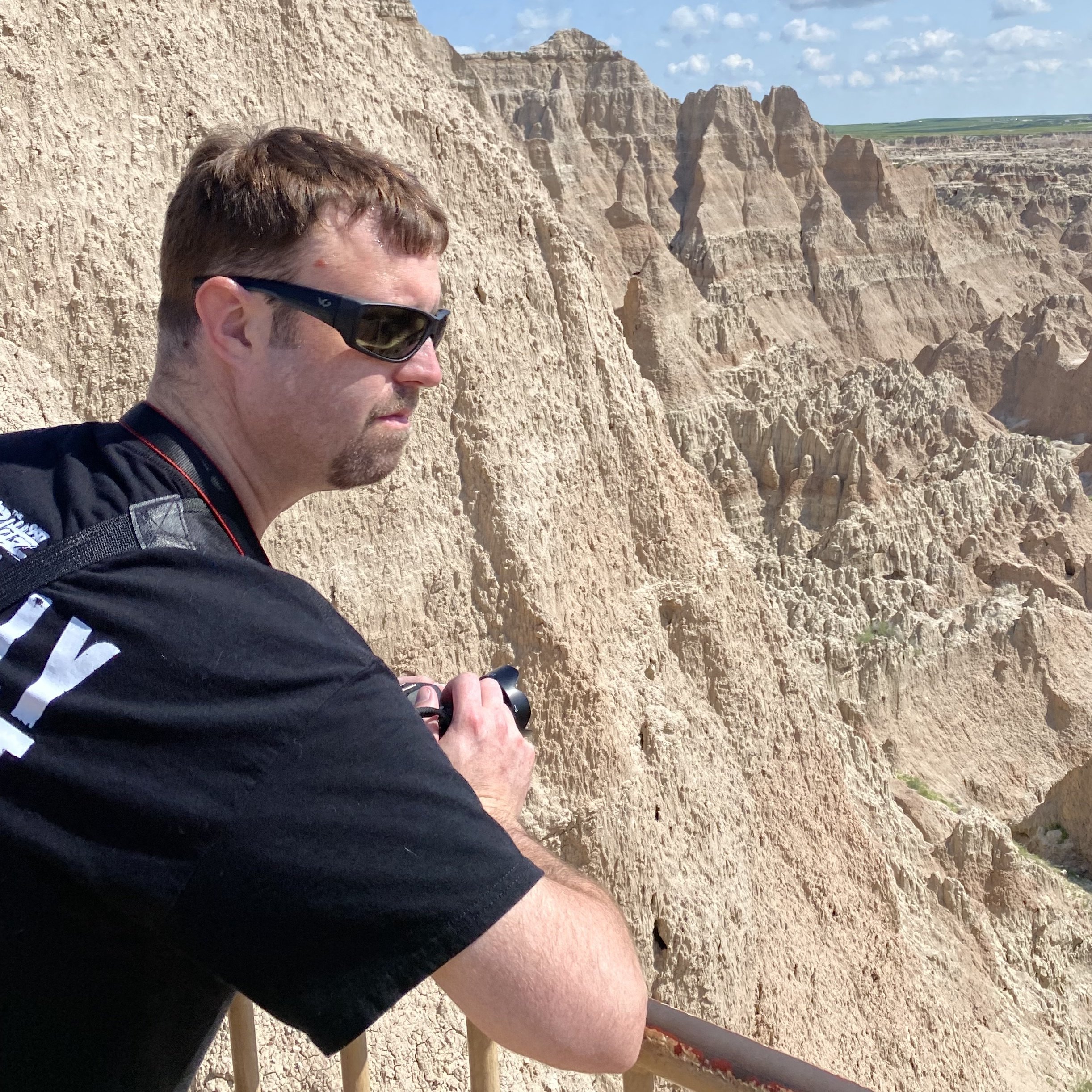Looking to get some anecdotal experiences from someone living in a cold climate using a heat pump as their main source of heat.
I see most of the people in the comments here have older model heat pumps.
Newer model heat pumps are quite a bit better than even ones made 10 years ago.
My dad had one put in two years ago for his garage kitchen, and it’s worked quite well, even in fairly cold temperatures. Most importantly, that heat pump doesn’t have an auxiliary mode, and yet it still works in sub freezing temperatures.
It would work even better if it were ground source, but those are both expensive and require digging up the yard.
There’s new technology coming along that won’t require digging. You can actually use vertical drilling instead.
This has been common in Sweden for decades, I had it in my previous house almost 20 years ago. If I remember correctly it was a 100m borehole. The only limitation is that certain soil/rock environments work better than others, so it’s not suitable for all locations.
Heated our house in northen Sweden just fine in -20/30C winters.
Yeah, if I recall what I had read about it, the part that was new was that oil well drilling technology was being applied that could really expand the types of ground it could be used in. I think the equipment has also gotten more compact, so it’s easier to drill in smaller spaces to be able to install it in more existing houses. I don’t think it’s really been any technology breakthroughs, but more like improvements in the engineering of it
I have a heat pump heating and cooling my basement in Atlantic Canada.
Temperatures in the winter hold steady around -20C with some dips a few times in the -40c range when accounting for windchill.
Works just fine. I keep my basement a nice 21C. Heating works well. I see lots of disinfo posted online about heat pumps not working in the cold and it’s all horseshit. Make sure you’re buying a heat pump that’s built for colder temperatures and you’re golden.
Windchill isn’t relevant when it comes to how heat pumps work. It only effects how humans perceive the cold. Technically, I think wind would actually boost heating performance during winter, but I don’t know by how much.
Does you place require much cooling in the summer? I bet your system is probably sized for the winter more than the summer
Yeah. below -20 C thermometer temperature the cold-climate ones start to crap out. To be fair, that’s pretty cold, and is probably only regularly relevant on the prairies and in the north.
There’s work ongoing to commercialise an electrocaloric heat pump. You could use normal methanol as the fluid, then, and it would work all the way down to -90. I’m holding out for that, because I’m on the prairies.
This just isn’t true. I’ve used my heat pump beyond -20 up until -40 and it still worked and heated the air. I don’t know why this is so hard to grasp for some people. I know my house, I’ve experienced the heat pump functioning without any issue in -30 range cold.
Really? Thermometer temperature, not windchill? Interesting. They’re only marketed as working down to that cold (with some variation). I’d be worried about damage any lower.
Really? Thermometer temperature, not windchill? Interesting. They’re only marketed as working down to that cold (with some variation) according to everything I’ve read. I’d be worried about damage any lower.
The main thing with heat pumps is that they obviously do heating and cooling. For most other systems, those two functions are separate, and can be sized appropriately.
If you live in a climate that is mostly hot, with some cold days, you’d size to accommodate the hottest days. If you live in a cool/cold climate, where you’d only occasionally need cooling, you’d size for the coldest days. Going oversize is bad because it is inefficient and just doesn’t work as well. It is often better to size the system to accommodate 99% (or whatever %) of days, and have a little backup heat and/or cooling capability for when the pump can’t keep up than it is to oversize and run inefficiently most days.
I lived in an apartment with a heatpump sized to handle the cold, and it kept me warm always with no trouble. It wasn’t that cold of an environment, though. During the summer, it would kick on to cool the place, and it would cool very fast. That sounds good, but what happened is the temperature would be fine, but the humidity would be very high, and I would get condensation on my windows and mildew in my closets. I ended up having to increase the hysteresis of the system, so instead of letting the temperature rise a couple degrees above the set point and cooling a couple degrees below the set point, it had to swing much further. That made the system run long enough in one shot to decrease the humidity, but it basically made it so I’d have to either let the place get uncomfortably hot first, or cool it down to uncomfortably cool.
If the system were smaller, maybe there would be a few days a year where I would have to wear a sweater inside, but I wouldn’t have to worry about 150 days of too much humidity.
The last thing to think about is air-source vs ground-source. Air source is basically a drop in for an air conditioner, but has a lower limit on temperature it will operate. That limit has gotten a lot lower over the years, but AFAIK, there are theoretical limits it can’t beat, depending on the physics of the system and particular refrigerant. Ground source, aka geothermal, should work most places provided you have the space for it, and money to install it. Underground never gets cold enough that the physics of heat pumps aren’t effective.
I get both ends of the spectrum. 30+ in the summer and -30(and worse, at times) in the winter.
I currently have a NG burning furnace and central air for the summer, but both are coming up on end of life so I’m weighing the pros and cons of going with a heat pump system.
Thanks for your reply!
Honestly you could look into a dual-fuel system. This is what I did. The furnace I have was not on it’s last leg so to speak, but looking at another 5 years or so left on it.
Dual fuel would allow you to add a heat pump to your existing setup, where it will take on the brunt of the heating and cooling needs. Only when it is so cold that it no longer is efficient will it swap over to the furnace. Good annual maintenance then can extend the life of your furnace for years.
If you opted for a low temperature heat pump they can be efficient down to 0ish degrees F. This may be a very cost effective and heat effective option for you.
Honestly my hope is to be able to remove myself from the gas hookup. NG is fairly cheap where I live so it seems counter intuitive but my delivery charges are always far more than my actual usage costs. I’d love to be able to be free of that. Plus, I’d like to do my part and if I’m going to be spending extra money on delivery/admin charges for not much gas usage, I may as well spend it on electricity.
A noble goal for sure, I’m right there with you. I’m trying to go carbon free myself. The gas furnace is the last thing for me, and it’s mostly simply because the heat pump just won’t do it up to a certain point. I took the idea that reducing 90% of my emissions was better than not doing anything and staying on it.
I hold to my advice, heat pump will take care of 90% of your HVAC needs, with gas as a backup. Another way of thinking is what happens if there’s a -20 degree day and the power goes out? If anything, a gas furnace is a nice safety backup.
I think this winter my gas furnace has kicked on 3 times total so far, and those were only in the early hours of the morning on incredibly cold days. Everything else? Pure electric.
It is not less efficient if it’s oversized, that is absolutely not true. It will just run less to keep the room at the desired temp. It’s actually more efficient to oversize because they have to run less. Running full on constantly to try to keep the temp, which is what happens if you undersize, it’s what’s less efficient. You actually want to aim to overshoot your needs by 30-50%.
Have any kind of source? Every source I’ve seen says that running oversize is worse. In my own experience, it led to humidity problems, too. In fact, every source in seen says its better to undershoot than overshoot.
What do you consider cold? I have one in central Ohio. It was my primary winter heat source until I had gas installed a few years back. Now the price of gas is so cheap I don’t run the heat pump in the winter. Obviously still use it for AC in the summer.
I like the idea of heat pumps for efficiency, but I fear I would be like you. I’m in a mild climate and my (gas heat) winter utility bills are so low already I have a feeling a more efficient heat pump would actually cost more to run.
A few years ago I created a spreadsheet where I can plug in electric and gas prices. It shows me which is the cheaper option to heat with. And year after year despite my heat pump being ~3x as efficient as my gas furnace the furnace has been hands-down cheaper to run. So I just leave the thermostat on Aux all winter. One day I suspect it will flip but that hasn’t happened yet.
My perfect world would be solar and batteries and a heat pump install. Free power and heating.
Unfortunately or fortunetly depending on how you look at it, both gas and electric is relatively cheap in my neck of the woods so it would take forever to pay for itself.
I went down the solar rabbit hole a year or two ago, unfortunately my house is oriented in a crappy direction and coupled with a bunch of old-growth trees there was no scenario where I would even break-even in the 20 year life expectancy of the panels. Maybe some day that will change.
Like you said though, I’m in the same boat where electric and gas are both quite cheap here.
I’m in central Ohio as well and had one installed when my coil died in my home a few years ago. It works fairly well down into about the low thirties, but beyond that the aux heat (gas, I kept my furnace) flips on.
There is a point where the temp dips low enough to render mine useless, but we have some at my office that work in the mid to low twenties(!)
I’m north of the 49th parallel so my winters get a fair bit colder than yours.
When you did use it in the winter did it ever struggle?
When you did use it in the winter did it ever struggle?
Yeah, when it would drop below about 25-30 degrees F it couldn’t keep up and the aux heat would kick in. Which at the time was VERY expensive dual 10,000 Watt electric coils in the ductwork.
Mine is an older model though from 2007 I think. I know the newer ones are MUCH better and some can go sub-zero.
Isn’t it really how well your home is insulated and whether the heat pump can keep up with the escaping heat?
no, heat pumps are rated for and work most efficiently at a specific temperature range. You’re pumping energy from outside in, so the outside temperature matters a lot.
you can have all the insulation in the world and it won’t matter if the heat pump can’t transfer that energy.
For heating specifically, heat pumps do le’t really work well (just yet). I’m well south of you and it’s cheaper to use gas than a heat pump. Maybe you could pair it with a geothermal sink to increase efficiency?
deleted by creator
The cold-climate ones start to struggle at around -20C, for reference. (Not the windchill, that’s an imaginary number)
If that doesn’t regularly happen where you live, you’re fine.
Define cold.
I have an air-water heat pump as the only source of heat and hot water in my house. It takes heat from the air outside and dumps it into a 200 litre water tank. I’d guesstimate that 80% of the homes in my neighborhood have the same setup.
Temperatures are going to be around -10°C for the next few days. When the silver falls below -15°C a resistive element kicks in to help the pump. In my climate I won’t see more than a handful of those per year.
Nordic models scale down to -30°C before doing the same.
Newer heat pumps are awesome. Northeast USA, with EcoEr brand. Two winters now close to single digits but rarely below freezing and it works like a charm. Mine is rated to operate to -40f. They had to wire it up for single heat source mode, by default they were wired for secondary heat source on the older models. Humidifier module can be added for winter comfort, my neighbor has that. Not sure what the cost tradeoff vs gas is, but it is definitely way cheaper than oil, which is what we replaced. What I like the most about it is that I can wave my two middle fingers at the oil industry and say hello to solar energy.
Summer cooling feels like Arctic cold, and comes with built in dehumidifier for comfort. It definitely works harder to heat in winter than cooling in the summer.
There are mini splits which require less construction, lower cost, with good cooling, but winter heat operating temp stops near 30f.
There’s lots of options out there depending on where you live , budget, needs.
Good luck !
Look up the model number. There are some that maintain 100% capacity down to negative temps, and there are some that lose capacity as the temperature outside drops. You can look up something called a “submittal data sheet” to find out the output capacity at different temperatures.
Capacity is measured in BTUs. So, if the heat pump is a 30,000 BTU model and it’s 47 degrees outside, it may produce 30,000 BTUs. However, at 17 degrees outside, it may only produce 20,000 BTUs. At -5 F, it may only do 10,000 BTU. Other models will keep 30,000 BTUs all the way down to -15F. The trade off is they use more electricity. Checking the data sheet can help you figure out what your model is capable of.
Mitsubishi is generally regarded as the best brand and they sell a line called “hyper heat.” These maintain capacity in low temps. Other brands have similar.
Technology connections has two videos about heat pumps from the perspective of someone in a relatively cold climate https://youtu.be/7J52mDjZzto https://youtu.be/43XKfuptnik
Yes, Massachusetts. I have a dual fuel heat pump with natural gas backup installed in 2020, so it’s a newer system. And I have one heat pump mini split in the least energy efficient, but most used room in my house (large, high ceilings, exterior walls on three sides, and a skylight).
The first couple of years I noticed when it got just below freezing, the central heat pump seemed to struggle to keep up. Then this year I replaced my windows and got new wall insulation in both of the main bedrooms and bathrooms (previous insulation was original from the 1960s and shredded to bits with huge gaps.)
After those improvements, I’ve been running my heat pump down to 20⁰F/-7⁰C so far without any issues at all. I’m excited to see how cold we can get and this system still keep up. I am still supplementing my one large room with the mini split, but that’s mostly because all my plants are in here, so I keep this room warmer than 68⁰F/20⁰C.
Lived in a house that had a heat pump with resistive electric heat as a backup in Canada. Never noticed a significant difference between that and other houses I’ve lived in that had natural gas furnaces.
Aux heat would kick whenever it was below about -5°C. That house would be about 20 years old now and had decent insulation for the location and age. It never really felt like the furnace struggled to keep the house warm, or was running all the time.
Cost wise it didn’t seem significantly better or worse than natural gas. It was definitely using more juice in the winter when there was a cold snap, but it wasn’t crazy amounts. The electric bill was actually highest in the summer when the heat pump was cooling.
I got one put in my 1200sqft manufactured home 4 years ago. It was able to keep most of the house 68 degrees with it in the single digits without breaking the bank. It struggles the most with just above freezing and foggy. This is because it has to constantly defrost the outside unit.
Overall 10/10 compared to forced air electric heating.Swede here, my parents use geothermal heating, my apartment has district heating.
Do you mean a ground source heat pump? What is the lowest temperature there?
Some Scandinavian cities have a centralized heating system where a plant is heating water in pipes via geothermal and the pipes are ran to every building in the city. This way not every building has to have its own heat source
Yeah, district heating is very common in Scandinavia. We’re pioneers in the technology.
Here in Stockholm, we have a wide variety of heat sources, including natural gas, biomass, geothermal, air-source heat pump, and trash incineration. We even had nuclear heat at one point. Some cities also have factory and datacenter waste heat. We also have systems that use winter lake water for cooling in the summer.
Speaking as USian, this sounds amazing.
It’s very nice. The best thing is that most of the heat is generated inside electric co-generation plants. They take normal combustion power plants and send the turbine waste into the district heating network for better efficiency and free heating. Basically achieving over 100% efficiency.
Wikipedia says about half of swedish homes are heated with district heating, with 580 networks nationwide.
I believe some cities and universities in the US have district heating, most notably New York City, but much of it runs on old school steam pipes instead of the insulated water pipes we have in Scandinavia.
I do think this is something that requires more density than most American suburbs have, unfortunately. Single family homes just don’t have the density to make district heating economically viable unless they’re close by to row-houses/apartments. You only see district heating in cities that have at least some apartment buildings here in Sweden.
This is what my apartmentbuilding uses, works well.
I guess that would be another name for it…
We have had temps down to -30C, and it has been fine, and way cheaper than direct electricity.
Yes, ground-source heat pumps are very common in Sweden. I’ve seen a bunch, they work well. I’ve seen them working well in old houses with air temps under -10 C, but I know they’re installed even in places that get down to -20 or -30.
my co-worker put one in a few years ago at their house out in the country, but they have multiple alternatives for heat when it’s “too cold”; the original fuel oil furnace, a pellet stove, a wood fireplace, and electric on a ripple circuit. the heat pump alone would not be enough in this climate where -40 or colder is not uncommon.
I live in the Nordics and my house is prrimarily heated by a geothermal heat pump. The temperature here has been between -20C and -30C for the last week, the pump can easily keep the room temperatures at +19C until the outside temperatures drop under -25C, after that the electric resistor kicks in to provide assistance.
The secondary heat source is the giant baking oven, which i heat every other day if gets this cold. The fully heated oven alone raises the room temperatures by 5-6C, which helps a lot to take the load of the heating pump and keeps the electric bill smaller.
I have been planning to install air/air-water heat pumps to both floors, they would be a good backup during these cold spells and would also provide cooling during the summer. And if I install a smart control system, I can have the air units do extra heating/cooling automatically when the electricity is cheap.
I just haven’t had the time to do the research where it would be best to install them and the prices rose steeply after Russia attacked Ukraine. So I’ll wait for a while before I’ll get those.










